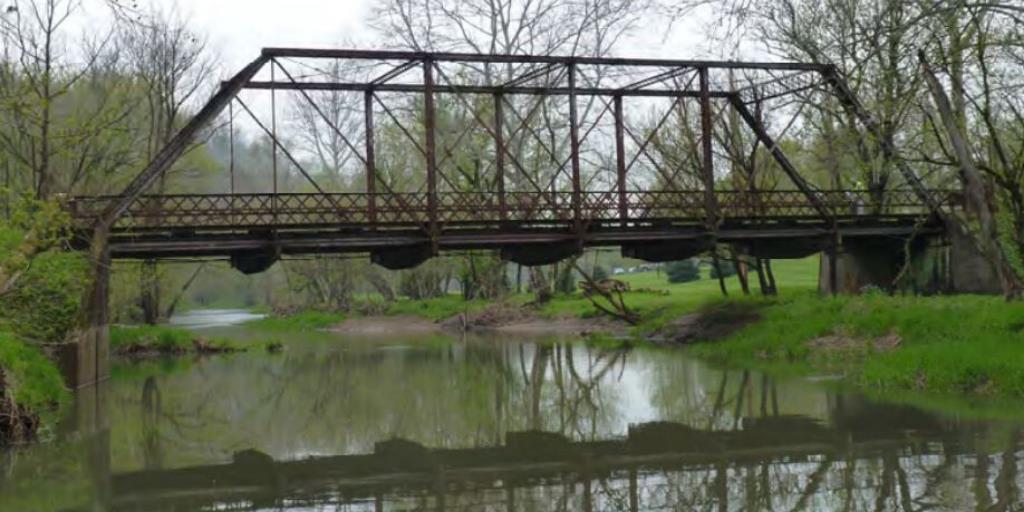
This article was originally published by the Pennsylvania State Historic Preservation Office.
Pennsylvania has a long and important history related to metal truss design, fabrication and erection. PennDOT’s SPIKE funding may help with their preservation as part of the commonwealth’s transportation infrastructure.
Pennsylvania is full of historic metal truss bridges
Pennsylvania’s varied terrain necessitated the building of many thousands of bridges. Additionally, the era of metal truss experimentation heightened during the second half of the 19th century and early part of the 20th century. These two things together resulted in the erection of a wide variety of metal truss bridge types and designs across the commonwealth.
PennDOT’s Efforts to Preserve HMTBs
In recognition of this, PennDOT, in conjunction with the PA SHPO, developed a management plan that seeks to find ways to preserve at least some of the remaining population of historic metal truss bridges.
Many of these bridges are owned by counties and municipalities, rather than PennDOT, which necessitated a broad outreach effort.
In 2017, PennDOT and SHPO staff met with the bridge owners, planning partners (Metropolitan Planning Organizations [MPOs] and Rural Planning Organizations [RPOs]), and interested parties to discuss those historic metal truss bridges that weren’t already part of a planned project.
The purpose of the meetings was to make owners aware of the historical importance of these bridges and to collect more information on their current and future use. The primary goal was to determine, at least preliminarily, the needs of these crossings and whether each historic bridge is capable, or could be capable through rehabilitation and/or on-going maintenance, of meeting those needs into the future.
- Bridges evaluated as “exceptional” or “high” historic preservation priority. These are the rarest and/or most unique of the remaining population of historic metal truss bridges.
- Bridges not already funded on the STIP.
- Bridges whose owners have committed to maintain the bridge and have expressed an interest in the historic preservation value of the bridge. This commitment came verbally in the management plan, but will be more formalized as a “maintenance plan” as part of rehabilitation planning.
- The public interest in, and the public visibility of, the bridge. Emphasis will be placed on bridges that are highly visible and/or have strong public support for their preservation.
- Cost will be factored in to the selection. To the degree all other factors are equal, funds will be leveraged to get the “most bang for the buck” in terms of bridges that need less work, in order to preserve as many bridges as possible with these funds.
It is hoped that additional funds can be brought into the program to advance bridges through design prior to 2023 such that the 2023 funds can advance one or more bridges into construction. The emphasis of the program, at least initially, will be on bridges that can be rehabilitated to meet vehicular needs. A separate program is being piloted to support the adaptive use of bridges that cannot meet transportation needs.
Looking for More Information?
More information on this program will be posted to PennDOT’s cultural resource’s website as the details of this program are refined and with the finalization of the STIP in October 2020.
Questions about the program can be addressed to PennDOT’s Cultural Resources Unit Manager, Kara Russell, at krussell@pa.gov.
Interested in learning more about historic metal truss bridges in Pennsylvania? Sign up for the PA Historic Preservation Office's Historic Metal Truss Bridge Newsletter!
ABOUT THIS BLOG
Did you know PennDOT is directly responsible for nearly 40,000 miles of highway and roughly 25,000 bridges? We oversee programs and policies affecting highways, urban and rural public transportation, airports, railroads, ports and waterways, in addition to administering the state's more than 11 million vehicle registrations and 8.8 million driver's licenses.
So, how do we do what we do? And how can we help you travel in Pennsylvania — whether it be for business or leisure — in safe and enjoyable manner? Read PennDOT Way to learn more about the department, what we do, and how and why we do it.
TAGS
50-Year Anniversary, 511PA, Aggressive Driving, Airports, Autonomous Vehicles, Bicycles, Bridges, Child Safety, Community Relations, Construction, COVID-19, Distracted Driving, District 1, District 10, District 11, District 12, District 2, District 3, District 4, District 5, District 6, District 8, District 9, DOTcom, Driver and Vehicle Services, Emergency Responders, Employment, Equity, FAQ Friday, Human Trafficking, Impaired Driving, Innovations, Live Free Ride Alive, Maintenance Monday, Motorcycles, Older Drivers, PA Motorcycle Safety Program, Pedestrians, PennDOT Connects, Ports, Public Transit, Railroads, REAL ID, Road MaP, Roadside Beautification, Rural Roads, Safety, School Buses, Seat Belts, State Transportation Innovation Council (STIC), Sustainability, Teen Drivers, Throwback Thursday, Transportation Funding, Travel in PA, Welcome Centers, Winter, Work Smart, Work Zone, Yellow Dot
LATEST POSTS
PennDOT Continues Sharing, Updating Resources for Local Governments to Pursue Bipartisan Infrastructure Law Funding Opportunities
Norwin High School Wins 2024 ‘Innovations Challenge’
Demo Complete: I-95 CAP Project in Center City Philadelphia
PennDOT Archeologist Connects Past, Present, and Future
Lehigh Valley DUI, Highway Safety Task Force Hosts Law Enforcement Seminar
ARCHIVES
2024
2023
2022
2021
2020
2019
2018
2017


